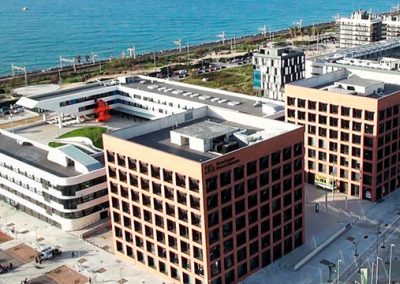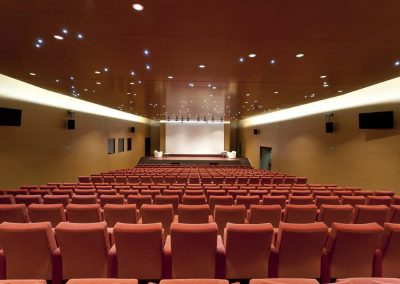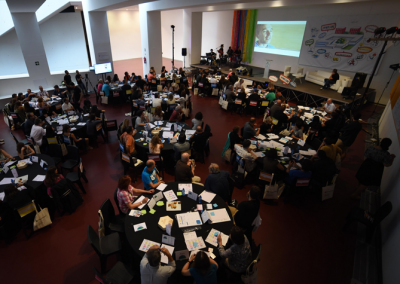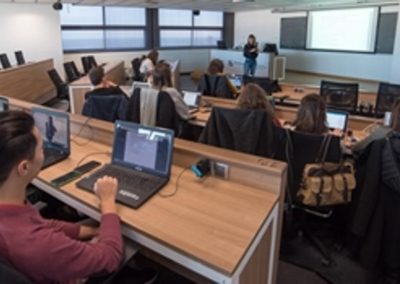Games and Literary Theory 2025
Slaying Dragons: Representations and Revisions of Myth and Folklore in Video Games
24-25 April 2025
TecnoCampus (Universitat Pompeu Fabra), Mataró (Spain)
Call For Papers
Games and Literary Theory Conference (GamesLit) is an annual conference for scholars of literature interested in expanding the scope of literary theory, and game scholars concerned with adapting the methodological and theoretical approaches of literary theory for the study of games. This year’s conferece will revolve around the concepts of myth and folklore.
The narratives and imagery of myth and folklore are an essential part of the history of video games, with early cases such as Wizardry: Proving Grounds of the Mad Overlord (Sir Tech, 1981), Ultima I: The First Age of Darkness (Garriott, 1981), and newer hits such as Wukong: Black Myth (Game Science, 2024). Myths and folklore have become increasingly popular for exploring contemporary issues in mainstream video games, such as Hellblade: Senua’s Sacrifice (Ninja Theory, 2017), which takes inspiration from Nordic and Celtic folklore trauma and mental health. Often approached now by fans through the lens of the lore, we would like to inquire into the narrative construction of myth and folklore in games and their potential to renew the tales and stories from different traditions as well as their capacity to prompt the creation of new myths.
As Juliette Wood (2018: 2) summarises, “myths, legends and folktales emerge as oft-repeated narratives with changing cultural significance that can merge with other genres”. Myths can be understood as the narratives of the sacred, the supernatural and the heroic (Eliade, 1963) and how these are perpetuated through tradition and ritual (Jung and Kerényi, 2001). But myths may also be conceived as those stories and motifs which are continuously repeated in the present and naturalised in social imaginaries and sociopolitical concerns and ideologies (Martínez García, 2017; Barthes, 1993) and thus become essential tools to understand the world we inhabit (Coupe, 2009). Within this framework, we invite proposals that study contemporary readings of myths and folklore in video games and the way in which video games may create new myths through repetition and naturalisation of ideas. In addition, we can think of the myriad fantastic creatures from different cosmologies that permeate games and which invite us to think both “the marvellous and the monstruous” within ambiguous margins (Wood, 2018: 4). Following last year’s focus on adaptation, games participate in the circulation, repetition, and rejuvenation not of specific stories, but of structures and motifs that shape myths. Games allow us to see the transformations of myths and the fantasy genre and we would like to invite speakers to think of the narratives and structures of myth and folklore and the dialogues between genres.
Some possible topics might be but are not limited to:
- Local and global myths and folklore in games.
- The semiotics and poetics of myths in games.
- The structures of myth and folklore in games.
- Revisions and subversions of myths.
- The genres of myth and folklore.
- Circulation of myths and motifs between literature and games.
- Ideology in games.
Abstracts of at least 300 and no more than 700 words (excluding bibliography) may be submitted via email at gameslit2025@gmail.com until February 14, 2025. Abstracts will undergo a double-blind review, so please make sure that all submissions are anonymous and that references to your own work cannot be identified.
Bibliography:
Barthes. R. (1993). Mythologies (Annette Lavers, Trans.). Vintage.
Coupe, L. (2009). Myth. Routledge.
Eliade, M. (1963). Myth and Reality (Willard R. Trask, Trans.). Harper & Row.
Jung, C. and Kerényi, C. (2001). The Science of Mythology: Essays on the Myth of the Divine Child and the Mysteries of Eleusis. Routledge.
Martínez García, A. (2017). La mitocrítica como propuesta de estudio de la imagen en la era digital. In A. Martínez García (Ed.) La imagen en la era digital (pp. 27-40). Egregius.
Wood, J. (2018). Fantastic Creatures in Mythology and Folklore: From Medieval Times to the Present Day. Bloomsbury.
Day(s)
:
Hour(s)
:
Minute(s)
:
Second(s)
Dragons, Books, and Roses
Games and Lit 2025 will take place immediately after the celebrations for Sant Jordi. The legend of Saint George has its own peculiarities in Catalonia: it located Saint George in the are of Montblanc and the drops of blood from the dead dragon are said to have transformed into a rose bush. You can read some more here.
On April 23, St George’s Day, there will be numerous cultural events, mostly revolving around literature. All cities in Catalunya will have stalls from bookshops and publishing companies and in Barcelona authors may be spotted signing their books. You will also find rose stalls all over the place, lest the slaying be forgotten. Read about Sant Jordi celebrations here and check further info about last year’s celebration here.
Important dates and fees
DATES
EXTENDED DEADLINE: The deadline for sending the abstracts is February 14, 2025.
Acceptance notification will be communicated by March 25, 2025.
FEES
- 100 EUR – offline participants (tenured lecturers and professors)
- 50 EUR – doctoral students with financing (from their laboratory/financed PhD programs), untenured researchers
- 30 EUR – online participants
People from the Global South or unfinanced students may contact the organisers at gameslit2025@gmail.com for further inquiries.
REGISTRATION CLOSES APRIL 18TH AT 23:00.
Programme and local committees
Programme Committee
Dr. Tomasz Majkowski, Jagellonia University, Krakow.
Robin Longobardi Zingarelli, Brunel University, London.
Clément Personnic, Université de Montréal, Montréal.
Local Committee
Dr. Beatriz Pérez Zapata, TecnoCampus (Universitat Pompeu Fabra), Mataró.
Dr. Víctor Navarro-Remesal, TecnoCampus (Universitat Pompeu Fabra), Mataró.
Dr. José Antonio Planells de la Maza, TecnoCampus (Universitat Pompeu Fabra), Mataró.
Programme
24 April (Room 213)
| 8:30 | Opening remarks |
| 9:00 | PANEL 1: Mythical Overview |
| 9:00 | Victor Navarro-Remesal, Beatriz Pérez-Zapata: Endless Odysseys: Modern myrioramas and literary and folkloric influences |
| 9:30 | Regina Seiwald: Myth, Ideology, and the Digital Realm: Video Games as Cultural Critique |
| 10:00 | Stanisław Krawczyk: The Romantic Tradition and the Rationalization of Myths in Video Games |
| 10:30 | Coffee Break |
| 11:00 | PANEL 2: Traditional Mythologies |
| 11:00 | Bruno de Paula: The myth of global games, national games, and the folkloresque |
| 11:30 | Ainhoa Jiménez Arranz, Salvador Gómez García, Nuria Navarro Sierra: he 84,000 Clones of Sun Wukong: The Monkey King as an Ambassador of Chinese Culture in Video Games |
| 12:00 | Costantino Oliva: Night Parade of 100 Demons – Adapting Japanese Folklore to Game Musicking Research |
| 12:30 | Nico Valdivia Hennig: Reimagining Indigenous Myths in Latin American Video Games: The Impact of Community Collaboration |
| 13:00 | Lunch Break |
| 14:00 | PANEL 3: National Mythologies |
| 14:00 | Aliaksandr Razhkou: Mythology of the Russo-Ukrainian War: The Influence of (Video)Games and Fantasy Literature on Political Communication |
| 14:30 | Nicholas Demetroulakos: From Chernobyl to Chornobyl: Ukrainian Identity in S.T.A.L.K.E.R: Shadow of Chernobyl and S.T.A.L.K.E.R. 2: Heart of Chornobyl |
| 15:00 | Hans-Joachim Backe: Freeing the Zone: Re-mythologization and de-mythologization in S.T.A.L.K.E.R. 2: Heart of Chornobyl |
| 15:30 | Tomasz Majkowski, Aleksandra Prokopek, Magdalena Kozyra: What We Do In (Digital) Poland? Gothic themes as political metaphors in Werewolf |
| 16:00 | Coffee Break |
| 16:30 | PANEL 4: Re-Reading The Classics |
| 16:30 | Natalia Kurasz: LIES OF P – NEW VIEW ON POSTHUMANISM IN CARLO COLLODI’S „PINOCCHIO” |
| 17:00 | Robin Longobardi Zingarelli: Grieving, longing, reuniting: love and myth in Hades’ Achilles and Patroclus’ quest |
| 17:30 | Marco Imperatore: THE CASE STUDY OF MARCUS JUNIUS BRUTUS AS A REFLECTION ON THE MYTHOLOGIZATION OF ANCIENT ROME |
| 18:00 | Paolo D’Indinosante : Old and New Myths in Asterix Video Games |
| 20:00 | Conference Dinner |
25 April (Room 213)
| 9:00 | PANEL 5: Mythical by Design |
| 9:00 | Jack Orchard: Mythtroidvanias: Mythologies and Transcultural Narrative in the Metroidvania Genre |
| 9:30 | Magdalena Cielecka: It takes a village – impact of various production practices on dialogue structures |
| 10:00 | Franciszek Michalski: Deadly Brakeout – how Supergiant Games connects gameplay mechanics with story and myths in Hades (2020) |
| 10:30 | Coffee Break |
| 11:00 | PANEL 6: Postmodern Worldbuilding |
| 11:00 | Daniele Monaco: Reinventing the Spirit of the Place: Representations of the Genius Loci in The Witcher 3: Wild Hunt |
| 11:30 | Leonid Moyzhes: Myths of the Zee: Sunless Sea as simulation of mythological world |
| 12:00 | Agata Waszkiewicz: The Janitor and the Old Gods: Remedy Connected Universe as Postmodern Folklore |
| 12:30 | Mikołaj Pokrzepa: Posthuman myths – machines, androids and humanity in NieR: Automata |
| 13:00 | Lunch Break |
| 14:00 | PANEL 7: Beasts, Monsters, and Creatures |
| 14:00 | Matylda Szpila: The tamed, the objectified and the folkloresque – modern depictions of kitsune in digital games |
| 14:30 | Karol Popow: Different Myths, Different Worlds: Shifting Paradigms of Mythical Creatures and National Mythology in TRPGs |
| 15:00 | Emilia Mazur: Ludic Bestiary – a playful tool of collective imagination, from medieval manuscripts to modern game interfaces |
| 15:30 | David Harold ten Cate: The Ecology of Myth in Alba: A Wildlife Adventure |
| 16:00 | Coffee Break |
| 16:30 | PANEL 8: Fairy Tales |
| 16:30 | Aleksandra Mochocka : Deconstructing and reconfiguring the fairy tale narrative patterns in Slay the Princess – The Pristine Cut (2024) |
| 17:00 | Eryk Froń: Slay or save the princess – a case study and close reading of the game Slay the Princess |
| 17:30 | Victor Navarro-Remesal, Mateo Terrasa-Torres, Alberto Porta: “Gaah! Thoughts!” The divine curse of a human consciousness in the modern apologues ‘Fifteen Dogs’ and ‘Frog’s Adventure’ |
| 18:00 | General Assembly |
| 18:30 | End |
Hotels
Recommended hotels in Mataró
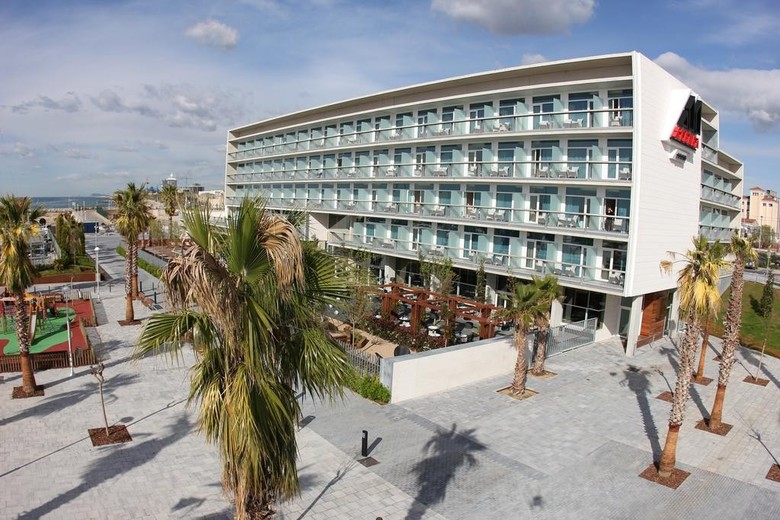
Atenea Hotel
Hotel Atenea (4*)
140€ aprox./night (individual room, breakfast included)
Walk: 13 min.
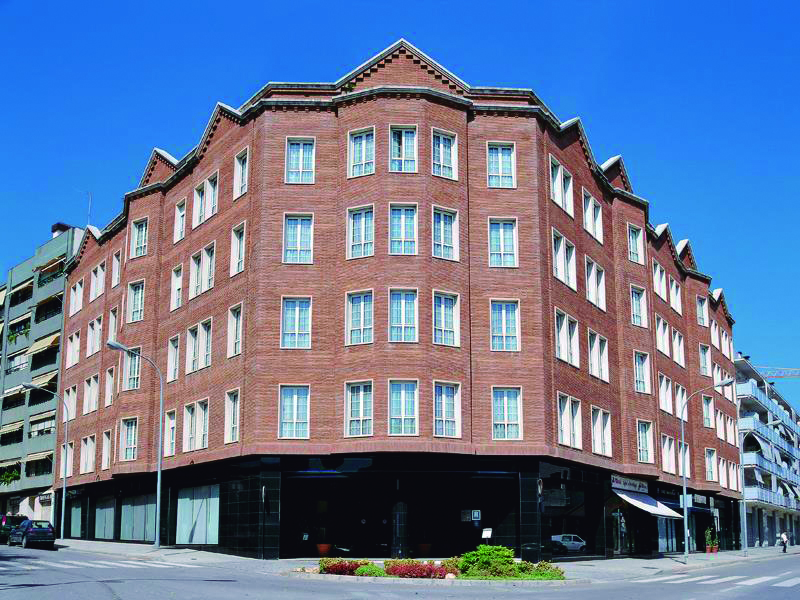
URH Ciutat de Mataró
URH Ciutat de Mataró (4*)
126€ aprox./night (individual room, breakfast included)
Walk: 6 min.

B&B Mataró Hotel
Hotel B&B Mataró (2*)
94€ aprox./night (individual room, breakfast included)
Walk: 1 min
Location
TecnoCampus, Pompeu Fabra University
08302 Mataró, Barcelona. Spain
gameslit2025@gmail.com
By train
Take the train line R1 (stations in Barcelona: Sants-Estació, Plaça de Catalunya, Arc de Triomf, El Clot-Aragó) until Mataró station. Some trains terminate at Mataró train station and other trains at Blanes or Maçanet-Massanes, but all of them stop at Mataró. You can check R1 schedule here and here.
By bus
You can take the “Casas” bus number E11.1 from Barcelona (it stops in Ronda Universitat, 21 or Plaça de Tetuan):
E11.1 – Barcelona – Mataró (centre) – Schedule in pdf
You also have night buses:
N80 – (Barcelona – Mataró)
N82 – (Barcelona – Mataró – Pineda)
By car
- From Barcelona, head North on the C-32 Motorway (formerly called A-19) towards Mataró/Girona.
- Leave the motorway at the exit number 95 “Mataró Sud” (about 25 minutes from Barcelona).
- You will come to a large roundabout with a huge metal sculpture, take the 2nd exit.
- TecnoCampus will be just on your right.

